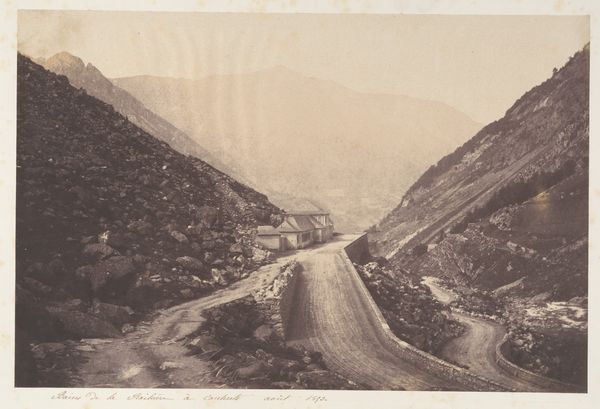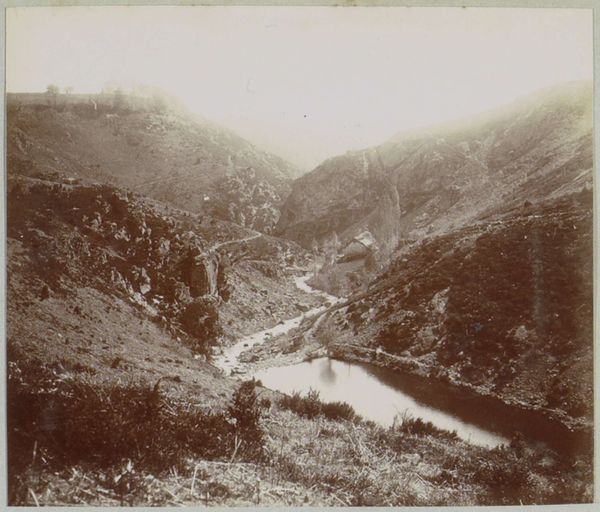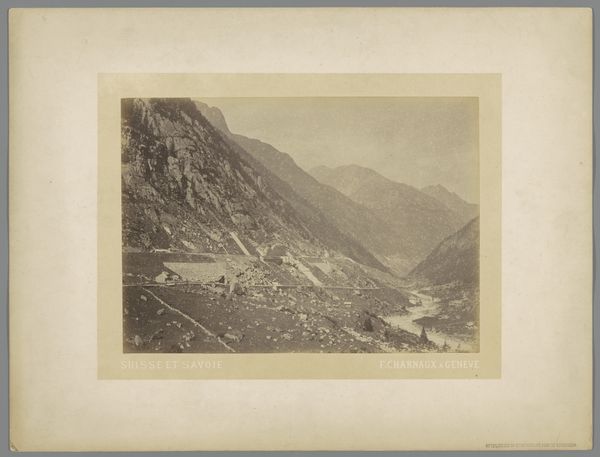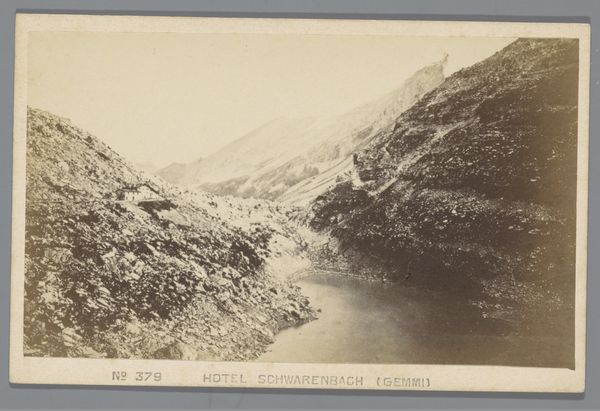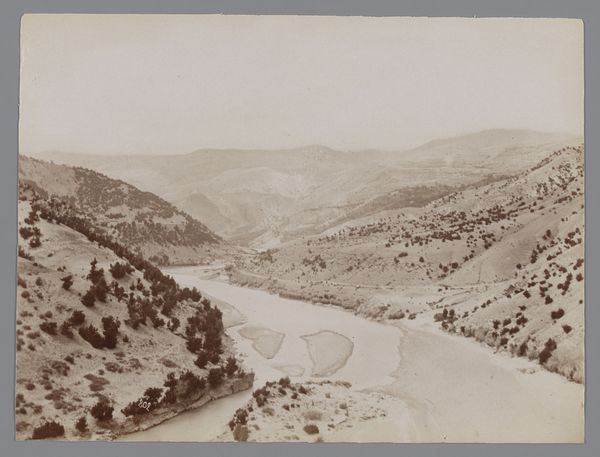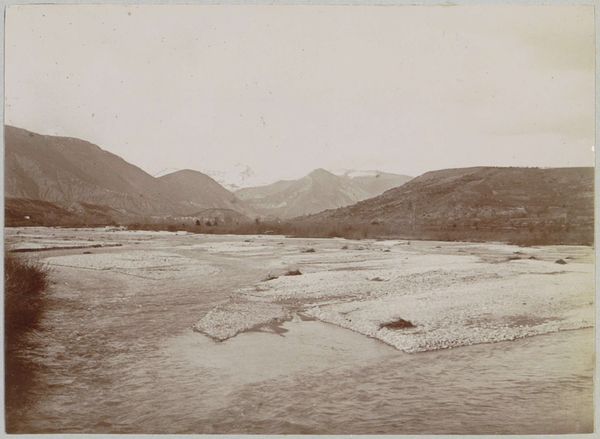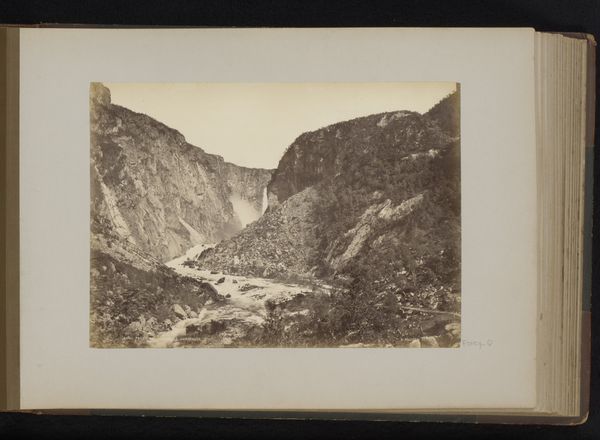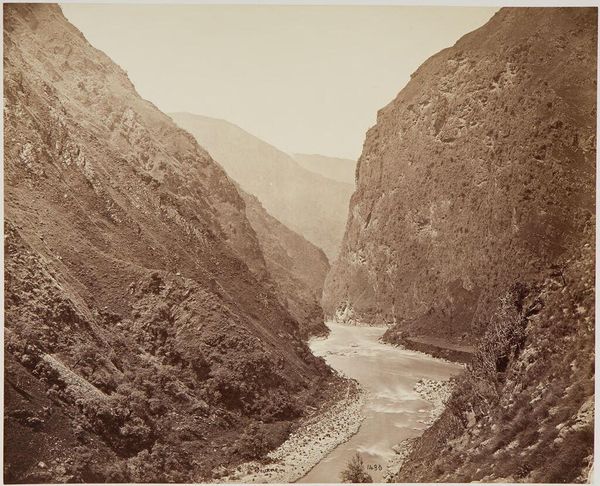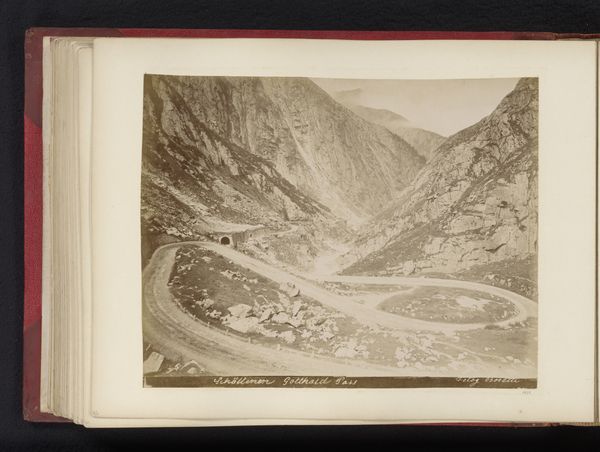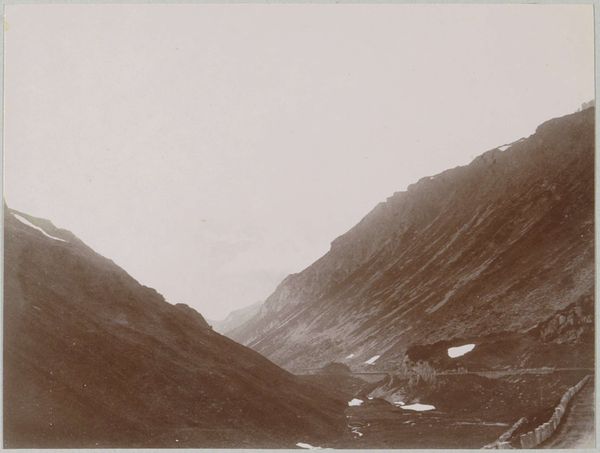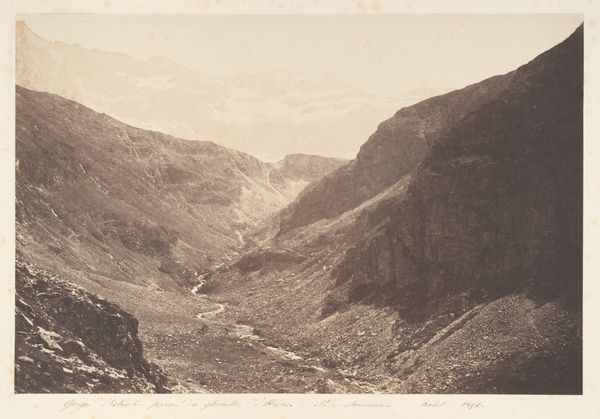
Landschap met rivier en heuvels aan weerszijden ("La route de Rescht"), Iran c. 1880 - 1910
0:00
0:00
photography
#
pictorialism
#
landscape
#
photography
#
orientalism
Dimensions: height 154 mm, width 225 mm
Copyright: Rijks Museum: Open Domain
Curator: What a serene vista. The composition, for me, feels dominated by a rather persistent somber mood. Editor: This photographic print, created by Antoine Sevruguin between 1880 and 1910, depicts "Landscape with river and hills on both sides ('La route de Rescht'), Iran." I see it less as somber, and more as highlighting a specific, probably fraught, cultural gaze. Curator: You find a cultural message in this depiction of land? I must admit I find it hard to discern, except through a vague longing for remote places, emphasized by the winding, climbing road. I wonder what that winding path symbolized for the artist, for viewers of the era? The soft-focus pictorialism makes the view itself seem somehow distant, dreamlike. Editor: Right, consider then Sevruguin's positionality. He was of Armenian-Georgian heritage, active in Iran at a time of immense social and political upheaval, particularly under colonial pressures. This 'Orientalist' landscape aesthetic often flattened nuanced geopolitical realities into romanticized, almost barren, images for Western consumption, subtly reinforcing power dynamics. Curator: Yes, the label 'Orientalist' casts a long shadow on any such image from that period. I'm still drawn to the symbolism of the road—its seeming invitation toward the horizon, toward the unknown—even though I know the image’s historical and social context is quite complicated. Doesn't that winding path beckon to the inner explorer in each of us, reminding us of all that remains undiscovered? Or, at least, unseen? Editor: Perhaps the romanticization is a way to overlook the hard work of seeing with clearer eyes, even now. While aesthetically captivating, these images participated in constructing particular views of Iran and its people. This highlights photography’s role not just in recording, but in actively shaping cultural perceptions. Curator: The tension between Sevruguin's artistic intention and the effects of such depictions across history... It underscores the continuing importance of images in navigating, interpreting, and shaping shared cultural understanding. Editor: Precisely. Let's embrace that complexity. It’s in holding that tension that we learn to better engage with images—both of the past, and those rapidly flooding our present.
Comments
No comments
Be the first to comment and join the conversation on the ultimate creative platform.
